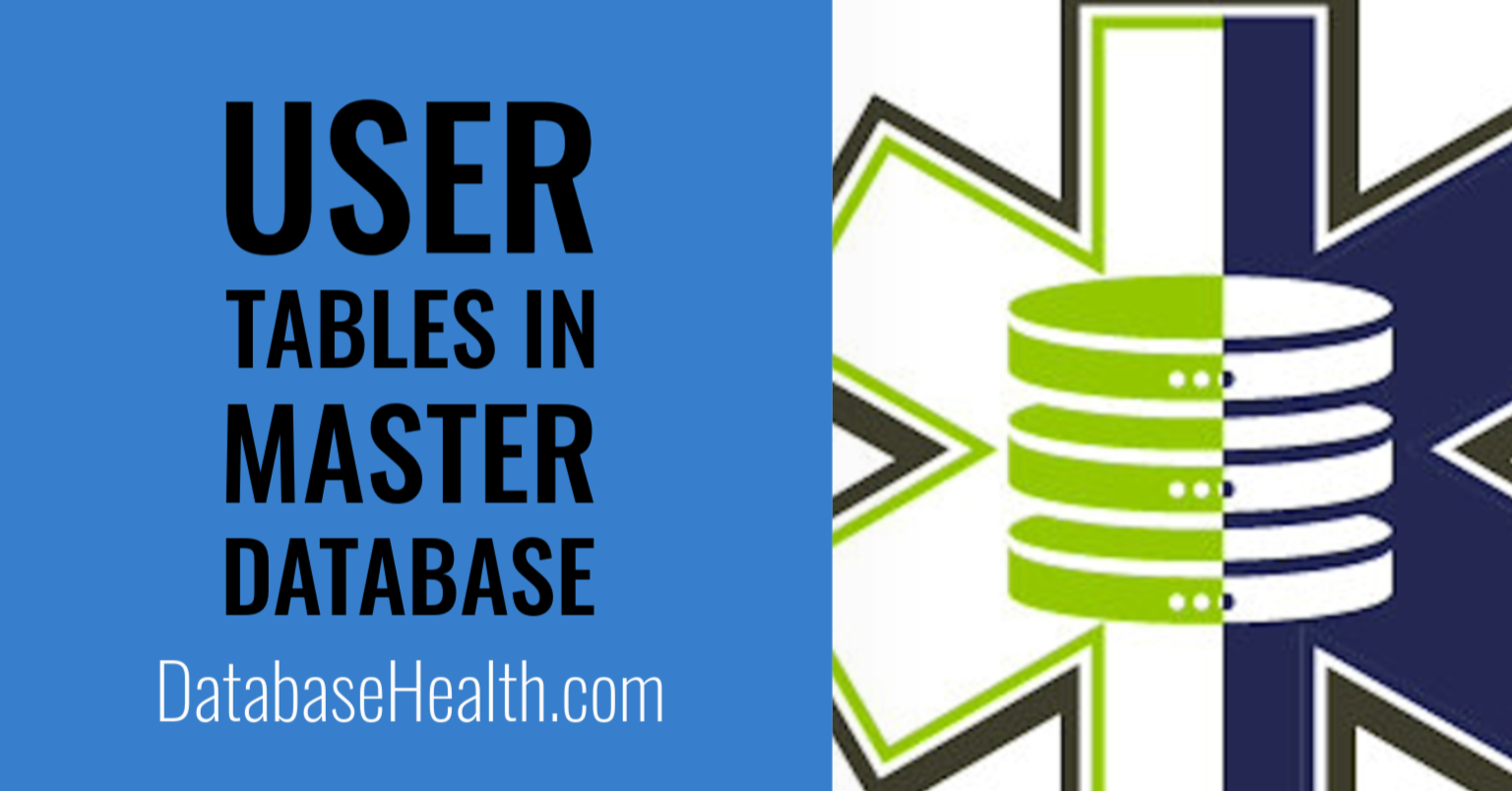User Tables in the Master Database and Disaster Recovery

This is just one of the many checks that our Daily Checkup and Quickscan Report from Stedman Solutions will report on.
Understanding the Risks: User Tables in the Master Database and Disaster Recovery
When it comes to managing SQL Server, the master database stands out as one of the most critical system databases. It holds essential system-level data, including server-wide configurations and the existence of other databases. Given its importance, it’s understandable why any conversation about disaster recovery will inevitably focus on the master database. However, a less discussed but equally vital topic is the risk associated with storing user tables in the master database, especially when it comes to disaster recovery.
The Role of the Master Database
Before diving into the specifics, let’s briefly revisit the role of the master database. It essentially serves as the reference guide for your SQL Server. It records all the system-level information for the server, including logins, configurations, and the existence and metadata of all other databases. In a sense, it’s the roadmap that SQL Server uses to understand what it should be doing and how.
The Temptation of User Tables in the Master Database
Occasionally, for convenience or perceived performance benefits, users might create their tables within the master database. While SQL Server allows this, it’s akin to storing your personal files in the engine room of a ship. Yes, they’re easy to access, but they’re also in a place that’s critical for the entire vessel’s functioning.
The Disaster Recovery Conundrum
Now, let’s talk about disaster recovery. Typically, when a SQL Server faces a catastrophic event, the focus is on restoring system databases (especially master) and then user databases. Here’s where the problem with user tables in the master database becomes evident. The master database is unique – it’s not just another database, and the process for its backup and restoration is distinct and more complex than that of user databases.
In a disaster recovery scenario, if your master database is backed up and restored, the system-level data it contains will indeed be recovered. However, user tables are another story. Since the primary purpose of backing up the master database is to preserve system-level information, there’s a risk that user tables might not be recovered as smoothly or completely as one would expect with standard user databases.
Why It’s a Risky Practice
- Complex Recovery: The process to recover user data from the
masterdatabase is more complex and fraught with potential issues than recovering from a standard user database. - Potential for Overlook: In the rush to bring a system back online, user tables in the
masterdatabase might be overlooked, given the focus on system-level data. - Version-Specific Behaviors: SQL Server behaviors can change with versions, and recovery nuances can vary, making the process unpredictable for user tables in the
masterdatabase.
Best Practices and Alternatives
- Avoid Using Master for User Data: The best practice is clear – avoid storing user tables in the
masterdatabase. Instead, use user databases designed for this purpose, which are more straightforward to back up and restore. - Regular Backups: Ensure regular, comprehensive backups of all system and user databases. In a disaster, having a recent backup is invaluable.
- Use Database Health Monitor: Tools like Database Health Monitor can help you keep an eye on your server’s health, performance, backups, disk space, and query efficiency. Regular monitoring can preempt many disaster scenarios or at least ensure you’re better prepared.
While SQL Server might allow you to store user tables in the master database, it’s a practice fraught with risks, especially when it comes to disaster recovery. The master database is the heart of your SQL Server environment, and its primary role is to manage system-level data, not user data. In the event of a disaster, your recovery process should be as smooth and predictable as possible – something that storing user tables in the master database does not support.
For those looking to deepen their SQL Server knowledge or explore more about best practices and disaster recovery strategies, consider enrolling in Stedman’s SQL School. Additionally, to keep your SQL Server environment healthy and well-monitored, leverage the Database Health Monitor tool. It’s your first line of defense in maintaining a robust, efficient, and recoverable SQL Server environment.
This is just one of the many checks that our Daily Checkup and Quickscan Report from Stedman Solutions will report on.
Need help with this, Stedman Solutions can help. Find out how with a free no risk 30 minute consultation with Steve Stedman.
More from Stedman Solutions:

Steve and the team at Stedman Solutions are here for all your SQL Server needs.
Contact us today for your free 30 minute consultation..
We are ready to help!

Leave a Reply